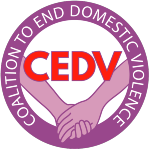PRESS RELEASE
Contact: Rebecca Hain
Telephone: 513-479-3335
Email: info@EndToDV.org
MMIW Advocates Called Upon to Make Amends to Families of Missing and Murdered Indian Men
WASHINGTON / October 20, 2022 – Last year, 58 American Indians in the United States went missing, according to the U.S. Department of Justice (1). A majority of them – 35 persons – were men and boys. One of these persons was Julius Elliott from Lawton, Oklahoma. He was 17 years of age when he was reported as missing.
And each year, about 140 American Indians are murdered. Three-quarters of these persons are men and boys, according to the Centers for Disease Control (2). One of these men was Nathaniel Iron Road of South Dakota, a member of the Standing Rock tribe (3).
The disappearance or murder of a man triggers acute grief to the victim’s family, a shock that is long-lasting and profound. Years after Brandon Lee Sandoval of Arizona went missing, his mother Bitsue admits, “I spend most of my days looking down the road expecting him to come up.” (4)
The grief of these family members is aggravated when they learn of a movement that seeks to minimize and even erase public awareness of the crisis of missing and murdered men. The so-called “Missing and Murdered Indian Women” movement — MMIW for short — makes no attempt to disguise its neglect of men.
The National Indigenous Women’s Resource Center of Montana, for example, states, “Our mission is to provide national leadership to end violence against American Indian, Alaska Native and Native Hawaiian women.” (5) The website does not mention the problem of violence against indigenous men.
In New Mexico, the Coalition to Stop Violence Against Women states, “4 out of 5 of our Native women experienced some form of violence in their lifetime.” (6) That statement misrepresents the U.S. Department of Justice study that reported nearly identical percentages of lifetime victimization for physical violence, sexual violence, and stalking among Native Americans (7).
Such depictions of domestic violence serve to foster divisive gender stereotypes and fray indigenous kinship networks.
A recent newspaper article highlighted the fact that male victims receive considerably less attention than female victims. The article plaintively asked, “Why aren’t we talking about it?” (8)
Given that there are no organizations devoted to addressing violence against indigenous men, the erasure of men by MMIW advocates serves to exacerbate the grief of families of missing and murdered men.
The Coalition to End Domestic Violence calls on MMIW proponents to issue an apology and otherwise make amends to the families of missing and murdered Indian men, to help alleviate their abiding sense of sorrow and loss.
Links:
- https://www.namus.gov/MissingPersons/Case#/82974?nav
- https://www.cdc.gov/mmwr/volumes/70/ss/ss7008a1.htm
- https://www.bia.gov/missing-murdered-cases/nathaniel-iron-road
- https://indiancountrytoday.com/news/are-missing-and-murdered-indigenous-men-being-ignored?redir=1
- https://www.niwrc.org/about
- https://www.csvanw.org/mmiw/
- https://www.ojp.gov/pdffiles1/nij/249822.pdf
- https://www.thestar.com/news/canada/2022/09/30/why-arent-we-talking-about-it-the-forgotten-cause-of-missing-indigenous-men-and-boys.html


